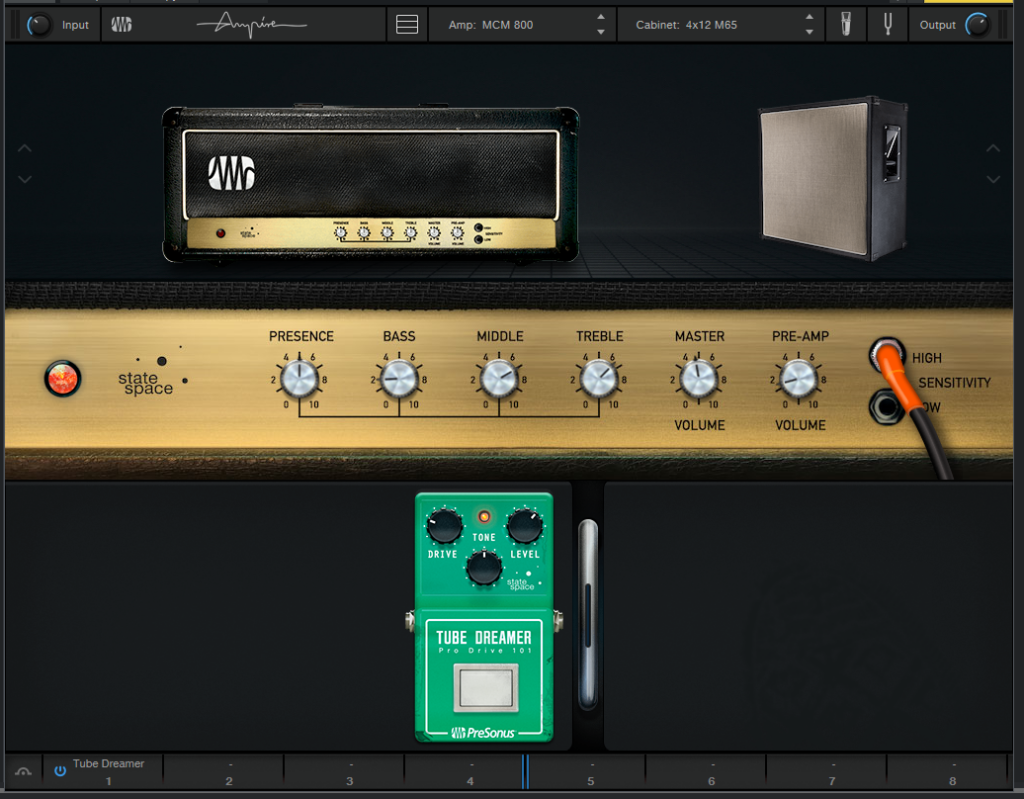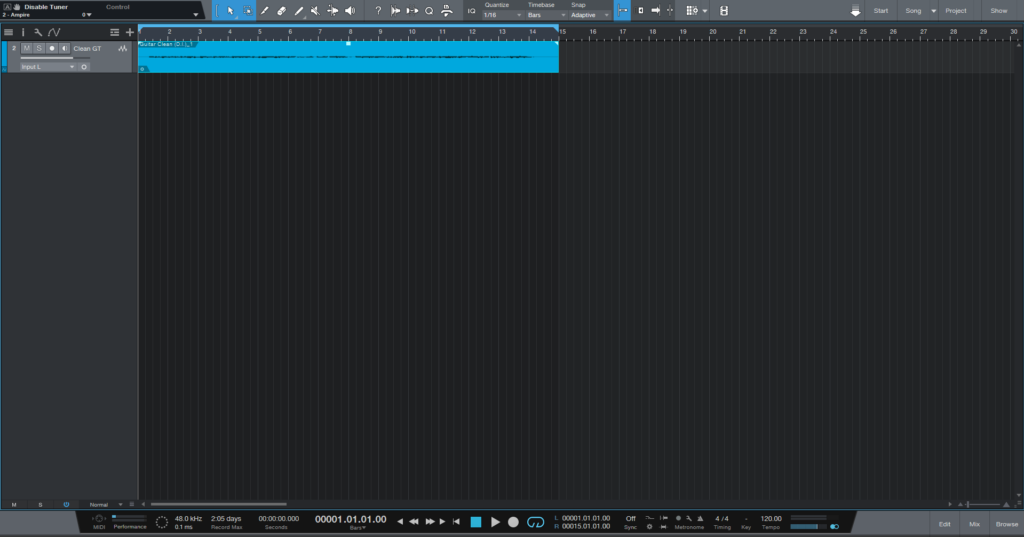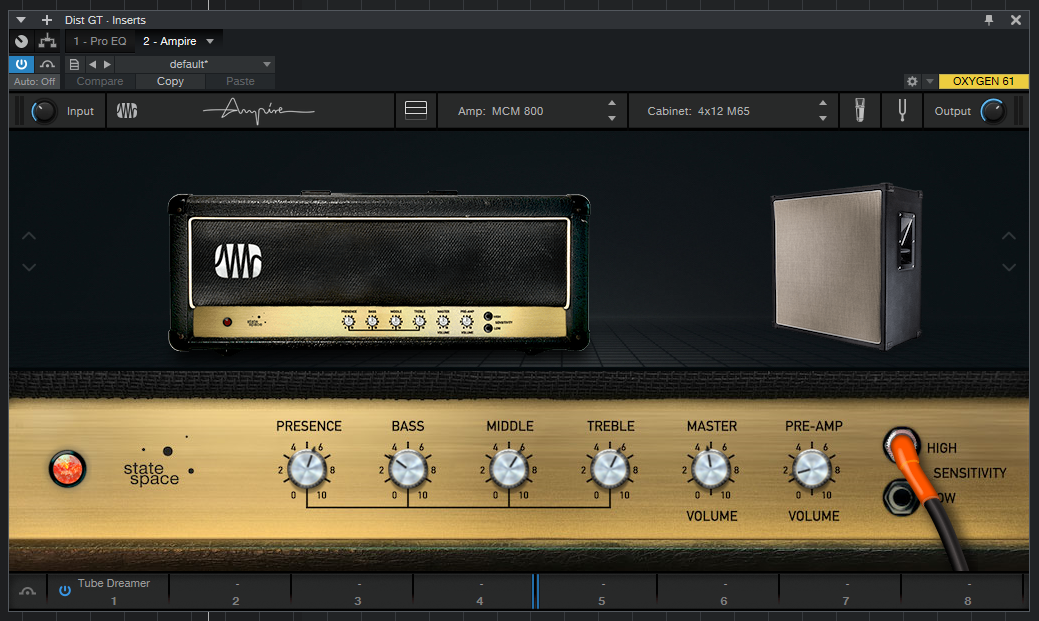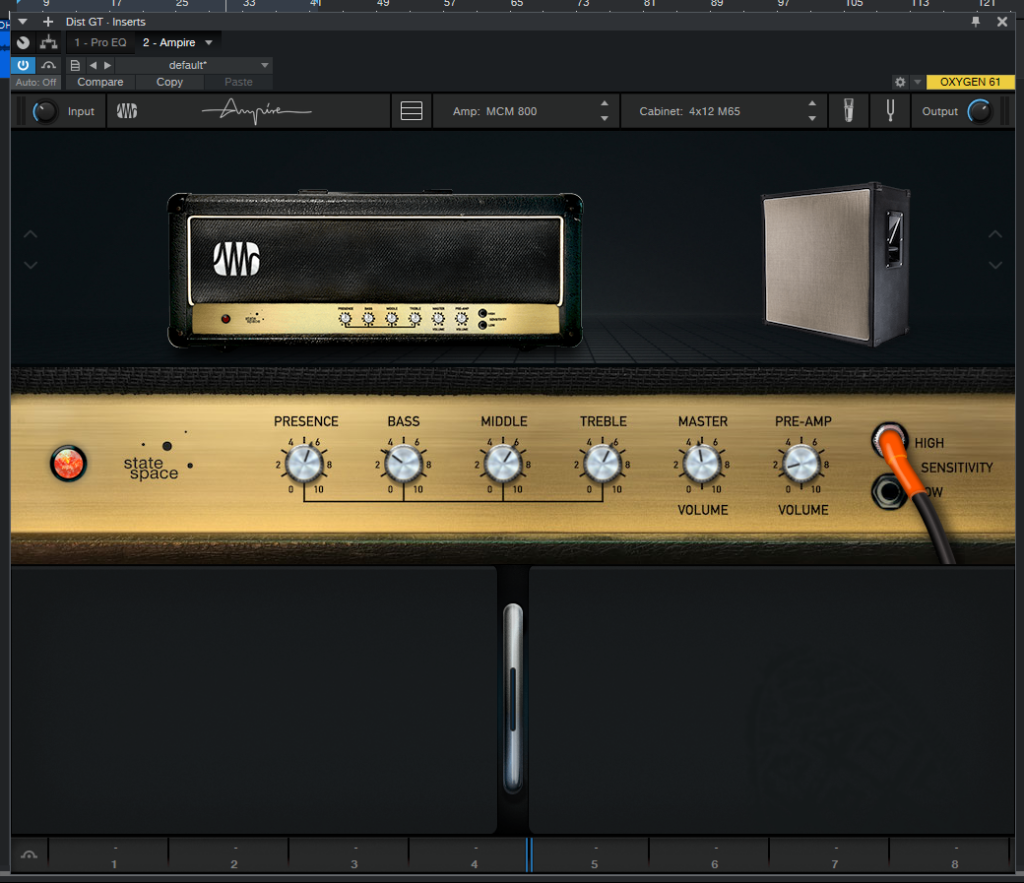Pedal Section in Ampire
This blog is part of our new series of tutorials based on the Ampire plugin included in the latest update of PreSonus Studio One 5.4
Want to learn how to use PreSonus Studio One in real time, with a professional digital audio trainer? It’s faster than blogs, videos, or tutorials. Call OBEDIA for one on one training for PreSonus Studio One and all digital audio hardware and software. Mention this blog to get 15 bonus minutes with your signup! Call 615-933-6775 and dial 1, or visit our website to get started.
Need a Pro Audio laptop or Desktop PC to run PreSonus Studio One software and all of its features at its best?
Check out our pro audio PCs at PCAudioLabs.
Pedal Section in Ampire
Ampire is the ultimate guitar tone and gear emulation solution included in Studio One as one of their proprietary plugins.
This plugin is capable of emulating the amplifier, cabinet, microphones, pedals and even the tuner you would have as part of your guitar rig.
Today we are going to learn more about the pedal section of this plugin, how to add pedals and the different options offered by Ampire.
Let’s explore this!
- Open or create a new Studio One Song
For the purpose of this tutorial we have a Song that contains a single audio track with an electric guitar DI signal recorded to it.
Ampire is designed to be added as a plugin (insert) on tracks that only contain DI signals.
2. Add Ampire plugin to the DI guitar track (audio track):
By default, the pedal section is hidden.
3. Locate the Show/hide Pedalboard button:
The pedalboard will show as:
As it can be seen, the pedalboard comes empty by default:
There is a silver divider in the middle of the pedalboard. All the pedals located to the left of this divider are added before the amplifier, while all pedals located to the right are after the amplifier.
Since this divider is in the middle, you have the option to add 4 pedals before, and 4 after:
You can always click and drag the divider to change its position.
4. Click on any of the available slots at the bottom to add a pedal to the signal chain:
Studio One will show a list with all kinds of pedals, and a description on the left side of the screen.
Some of the pedal types included are:
- Distortion Pedals: Big Fuzz, FAT, Tube Screamer
- Dynamic Processing Pedals: Compressor, Gate
- Modulation Pedals: MP Ninety, Modulation, Chorus, Wah Wah
- Time-based effects: Delay, Reverb
5. Click on any of these pedals to add it to you signal chain:
For the purpose of this tutorial, we added the Big Fuzz at the first slot.
6. Repeat the previous step to add more pedals to the chain:
By default, pedals are inserted and activated. You can turn OFF a pedal by simply clicking on in stomp button as if you had it in front of you!
Knobs can be manipulated by simply clicking and dragging them, obtaining the desired sonic results!
And that’s it!
Go ahead and experiment with these and get that perfect guitar tone you are looking for!
Using Presonus Studio One 5.4 software to produce music would be ideal with one of our professionally designed PCAudioLabs Systems due our high-performance specifications in order to work with any of the Digital Audio Workstations supported. If you would like to order one of our PCAudioLabs computers, please call us at 615-933-6775 or click this link for our website.










